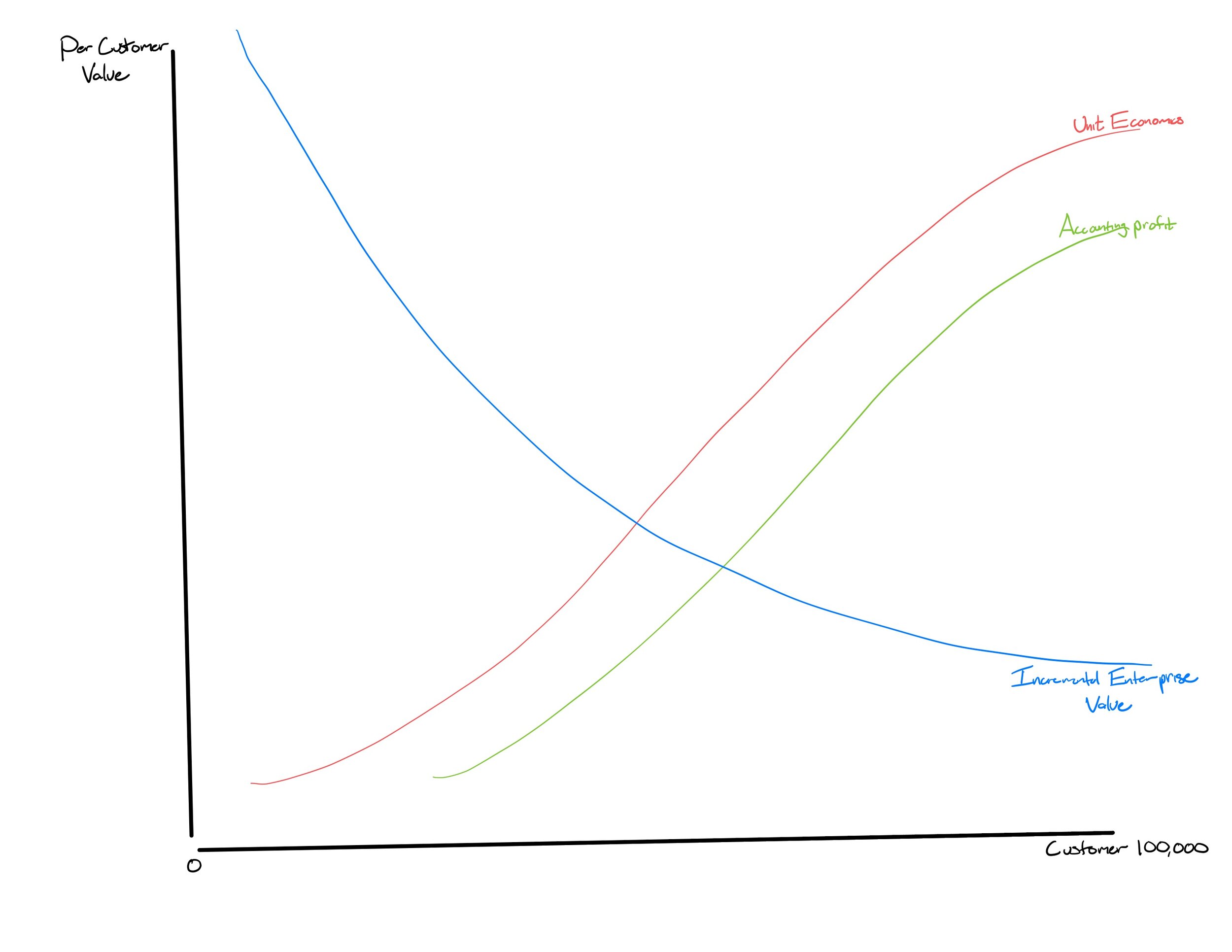Why your first customer is worth $10,000,000
Founders and early employees can earn orders of magnitude more than employees 50+. And there is a good reason for that. Early employees aren't travelers, they are cartographers.
"Do things that don't scale" is Paul Graham's advice to founders and early employees...
"The most common unscalable thing founders have to do at the start is to recruit users manually. Nearly all startups have to. You can't wait for users to come to you. You have to go out and get them."
and while I've always believed this, I didn’t really understand.
After all, the first customer is the least profitable! They take the most effort, the most attention, the most support, and the most duct tape of any customer to come! Hundreds of hours of founder and early employee work go into building for, earning, and keeping those first customers. Those customers are wildly unprofitable on a unit economic (CAC / LTV) basis, and an accounting basis... and quite possibly even a morale basis.
There is this moment, when you have a few early customers, and you are feeling bruised and battered and exhausted just from getting those few... that you wonder if this will ever get easier.
If you spend too much time imagining that all of the customers to come will be AS challenging, slow, and expensive as this first customer — “well, we may as well shut the company down right now.”
However.
The math that made me understand "Do things that don't scale" was when I stopped looking at Unit Economics and started looking at Enterprise Value—thinking like an investor.
"I am a better investor because I am a businessman, and a better businessman because I am an investor." - Warren Buffett
Jason Calacanis said on Shane Parrish's podcast “a company goes from uninvestable to investable when they go from 0 customers to 1 customer.”
That's when "Do things that don't scale" clicked to me.
The projected enterprise value change when a company goes from 0 customers to 1 customer is... approaching an infinite % increase. At 0 customers a company is worth $0.
When you don't have any customers, the thing that adds the most value to your business is adding your first customer.
When a young company adds one customer, they aren't just adding the LTV of one customer to their enterprise value. They are also adding the likelihood of winning other customers with similar problems. They gain some incremental credibility, some incremental scale, and lessons to carry forward.
Think about early sales’ impact on projected enterprise value, and it is clear winning and keeping customer #1 is the company's most important job. Your first customer may be worth millions of dollars to your enterprise value. It may take you from uninvestable to investable.
I don't think that trend stops at one. Next most valuable is winning and keeping customer 2. Then 3, etc.
It's not as obvious when the most important thing for the company is something other than winning the next customer, unless there is some critical constraint on serving the next customer.
The more customers you have, the more certainty, replicability, and economies of scale you gain.
The unit economics and the accounting profit from customer #100,000 will be better than customer #1... but #100,000's impact on enterprise value will be much lower.
That is why "do things that don't scale" matters — because early customers are huge steps to turning a company from "default dead" ($0) to "default alive" ($1,000,000+). And the early team is rewarded for their high-risk, high-reward cartography work.
It is hard work. Sitting in front of a customer confused about what they need and whether you can help is uncomfortable. Selling a new product to new customers with no script is tough. Founders and early employees who bring in the first customers are playing a different game and earning different rewards than sales teams who come along later.
Takeaway: Act like your first customer is worth $10 million.
When you look back on the early days from your perch at a $100+ million company value, it will feel true. And the heuristic will help you focus and prioritize early on.
Notes:
"Customer" implies paying. Other methods of validation are more waffle-y in this context and you'd look at weekly usage, engagement, etc.
Numbers are just an example here. For a free social product, maybe multiply by 10 or 100. If you’re Palantir, you may only have 100 customers ever.

